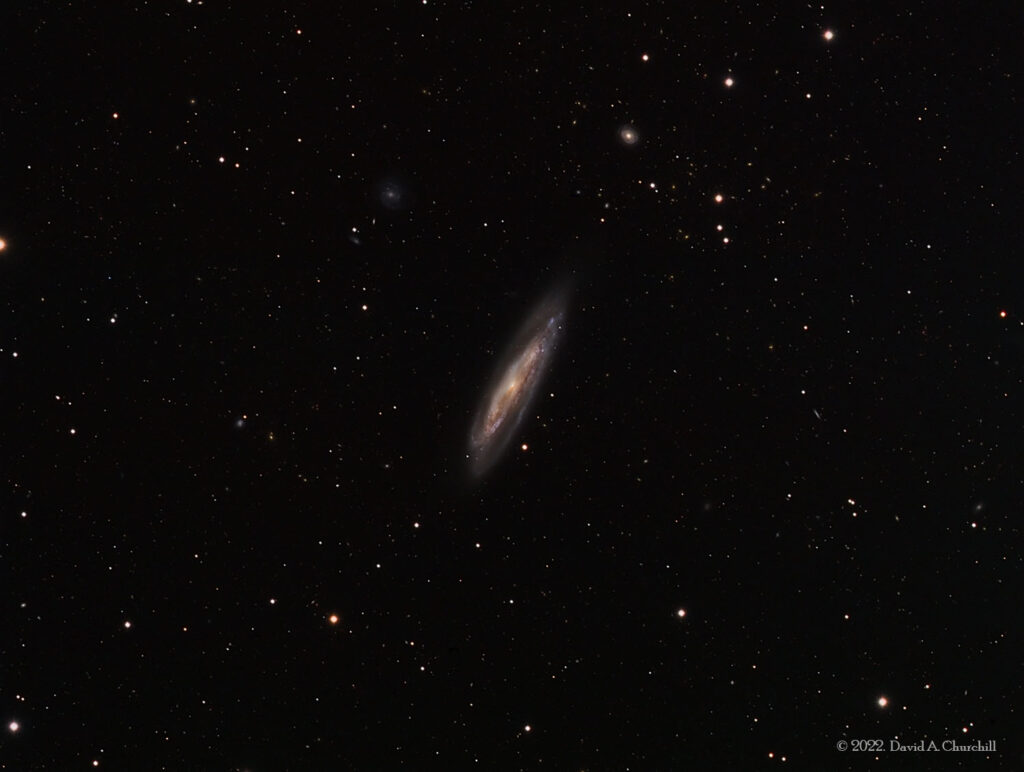Messier 98
Intermediate Spiral Galaxy, Coma Berenices
- Description
- Technical
- Links
Messier 98, M98 or NGC 4192, is an intermediate spiral galaxy about 44.4 million light-years away in slightly northerly Coma Berenices, about 6° to the east of the bright star Denebola (Beta Leonis). It was discovered by French astronomer Pierre Méchain on 1781, along with nearby M99 and M100, and was catalogued by compatriot Charles Messier 29 days later in his Catalogue des Nébuleuses & des amas d’Étoiles. The morphological classification of this galaxy is SAB(s)ab, which indicates it is a spiral galaxy that displays mixed barred and non-barred features with intermediate to tightly wound arms and no ring. It is highly inclined to the line of sight at an angle of 74° and has a maximum rotation velocity of 236 km/s. The combined mass of the stars in this galaxy is an estimated 76 billion (7.6 × 1010) times the mass of the Sun. It contains about 4.3 billion solar masses of neutral hydrogen and 85 million solar masses in dust. The nucleus is active, displaying characteristics of a “transition” type object. That is, it shows properties of a LINER-type galaxy intermixed with an H II region around the nucleus. Messier 98 is a member of the Virgo Cluster, which is a large cluster of galaxies, part of the local supercluster. About 750 million years ago, it may have interacted with the large spiral galaxy Messier 99. These are now separated by 1,300,000 ly (400,000 pc).
Telescope: Astro Physics 175EDF f8.3
Mount: Astro Physics 3600GTO “El Capitan”
Camera: SBIG STT8300
Guider: Mini Borg 50 / SBIG STi
Filters: Astrodon II 36mm LRGB
L: 49×10 mins = 490 mins, R: 24×10 mins = 240 mins, G: 24×10 mins = 240 mins, B: 24×10 mins = 240 mins
Total Imaging Time: 20h 10m
Data Imaged remotely over 8 nights during May 2022.
Data acquisition & Processing by David Churchill.
None

